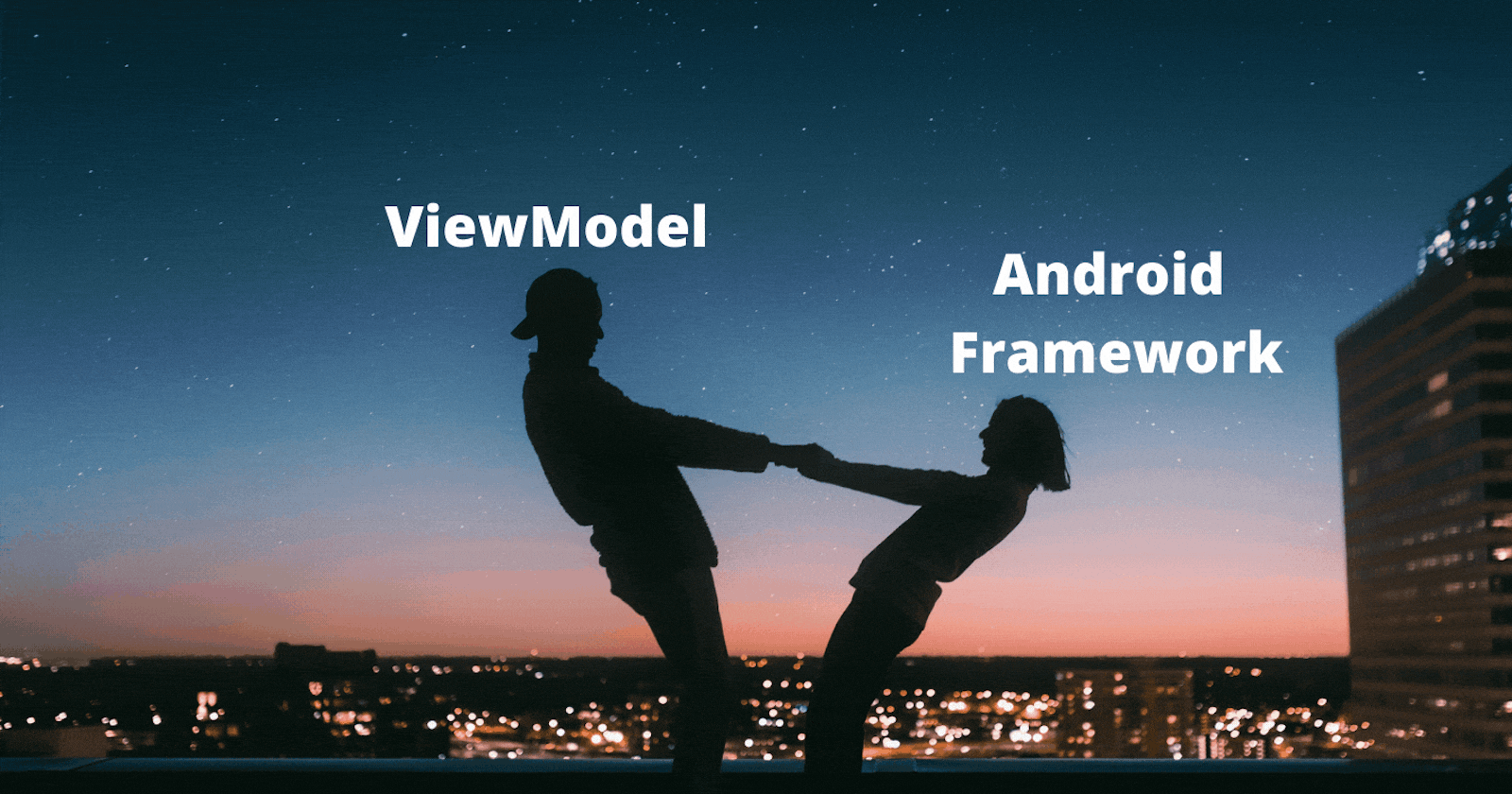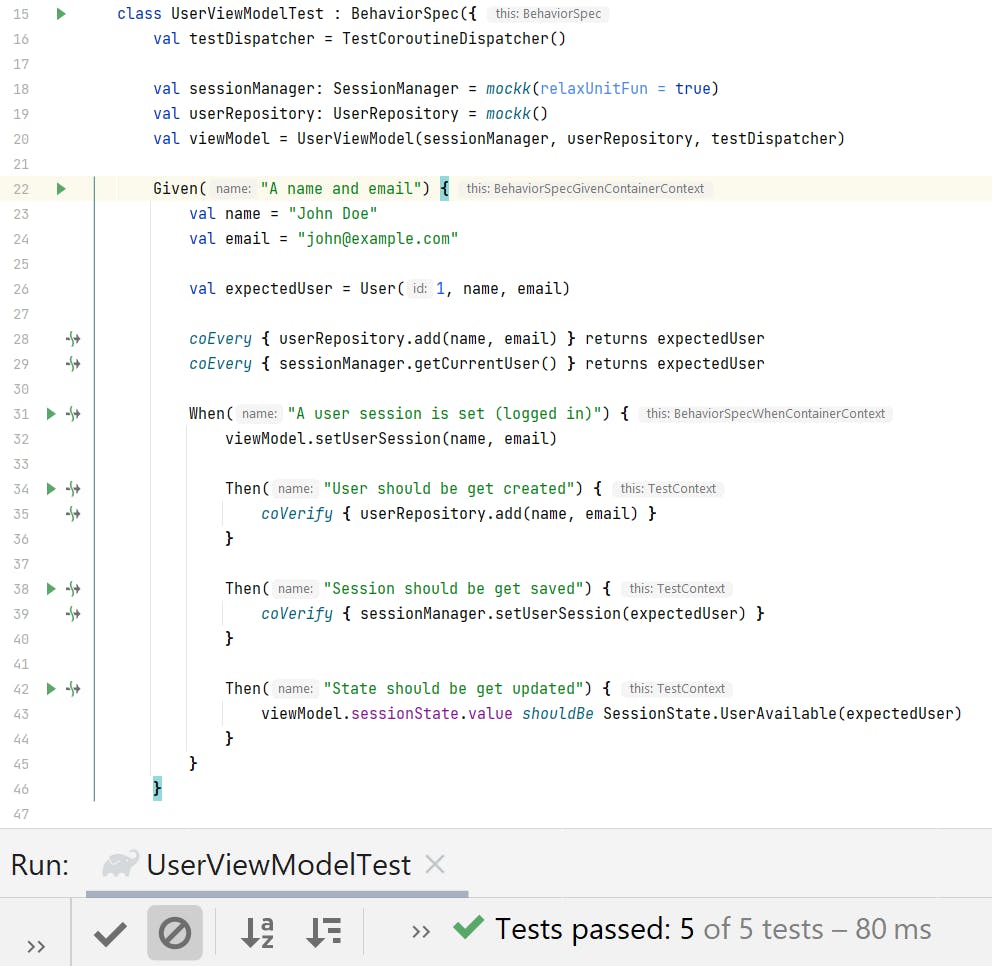
🙅♂️Don't let ViewModel know about framework level dependencies
Let's discuss some good practices to make ViewModel better!
Hey Android developers 👋, Most of today's developers are adopting MVVM architecture primarily for Android app development👨💻. While adopting these things, anyone can do certain mistakes (which is absolutely fine). In this article, we are gonna see how to follow good practices with ViewModels in Android and how some decisions can make us helpless. Okay, let's start 🏃♂️.
👁 Overview
Let's understand the concept of ViewModel and what's its purpose.
🤷♂️ What's ViewModel?
In MVVM architecture, it suggests separating the data presentation logic(Views or UI) from the core business logic part of the application. ViewModel is such a component whose work is to execute core business and prepare required data for UI. So that ViewModel can be used by Activities/Fragments.
- In Android, ViewModel is a part of Android's Architecture component.
- UI shouldn't hold the logic, have to move it to ViewModel.
- UI will subscribe to any state changes in ViewModel and will update UI accordingly (reactive approach).
- ViewModel is lifecycle aware and can survive changes.
- 🔴 ViewModel should not hold Android framework references (Not Mandatory). For e.g. Activity, Context, View, Drawable, etc.
🤔 Why ViewModel shouldn't hold framework references?
As we discussed earlier that ViewModel is lifecycle aware but View is not. Many developers also pass the Activity/View references to the ViewModel which is the most common case that developers make the ViewModel framework aware. But ViewModel should not be treated like this. If the View reference remains in ViewModel and it gets destroyed then ViewModel still hold that reference which may lead to the memory leaks 😮. Thus, the purpose for which ViewModel came into the picture is broken💔.
🥽 Continue...
As you can see in the title, I've mentioned "Don't let ViewModel knew about FRAMEWORK LEVEL DEPENDENCIES". So let's discuss what's exactly Framework Level Dependencies.
So as you might be aware of AndroidViewModel and have used already for some rare cases.
AndroidViewModelis aViewModelthat has Application Context awareness.
Now when we are introducing Context in ViewModel, the last point 🔴 mentioned above is breaking. Why? Because Context is a part of Android's framework. Then it decreases testability, modularity and maintainability of the codebase. No matter our application is small scale or large scale but having tests is always good because it acts as a safeguard as it gets expanding. That thing is breaking by using AndroidViewModel. Because it doesn't let us write unit tests for that part of code (integration testing is possible only) ☹. After all, everyone knows how tricky it is to control memory leaks from the usage of Context if something goes wrong.
Why do we need AndroidViewModel? 🤔
For handling framework supported tasks in ViewModel sometimes we may need it. Example: File management, storage, WorkManager APIs, etc. But it's completely up to us to implement business without using it.
Let's see the example implementation to understand the problems...
👨💻 Example Implementation
Okay, so we have to develop a simple android app that stores a user session and performs simple login/logout actions. Now it's obvious that we'll need to use SharedPreferences. So let's see how we can implement it.
❌ Example using AndroidViewModel way
I'm skipping UI code and will be only showing the ViewModel code. So let's create UserViewModel. Need to inherit AndroidViewModel and create SharedPreferences for storing a user session. Also, let's implement business for setting a user session.
Have you seen this code😕? Let's discuss key issues with this.
👎 Disadvantages of this approach
- The
ViewModelis not unit-testable. - If we need to use sessions in let's say another
ViewModelwe'll again need to copy the same code there. It'll lead to code duplication👯♂️. - Hard to maintain if something changes.
- Lost single-responsibility principle since ViewModel does everything.
Isn't it painful? 🤕
Let's see how can we make it better 🦸♂️
✔ Example using ViewModel way
So after coming from the previous approach, we need a solution that will be modular, easy to maintain, easy to plug whenever need. So we can extract the logic of session management into a separate class 😃.
Let's create a SessionManager. Create and implement operations/business logic of session management.
Now, it's time to refactor and clean up UserViewModel 🧹.
😃 Can you see the difference? Now it has inherited core ViewModel. Too much code is now removed.
👍 Advantages of this approach
- Only
SessionManagerand its implementation will be responsible for managing user session related business. Thus, we achieved the Single-responsibility principle from SOLID. - ViewModel now only care about executing required business and updating UI state accordingly.
SessionManageris handling session management. - Now
UserViewModelis referencing interfaceSessionManagernot a class so it (ViewModel) doesn't care or know what's happening under the hood. It means, now ViewModel doesn't have knowledge of Framework dependencies 😀. - If any other
ViewModelor part of code needs to handle the session management then they just get an instance ofSessionManagerand that's all! - Easy to maintain.
- Testable
👎 Disadvantages of this approach
🙄 Obviously NOT 😅
🧪 Testing
After using the best approach, UserViewModel is ready for testing. Let's write code to test the code😂.

Cool! That's all. I hope this article helped to understand the pitfalls of AndroidViewModel.
If you need to have a look at both approaches, refer to this GitHub Repository. Here you'll find both approaches. Also, if you want to take a look at just diff only➕➖ then refer to this Pull Request which is a change from the first approach to the second.
Thank you! 😀
"Sharing is caring"
